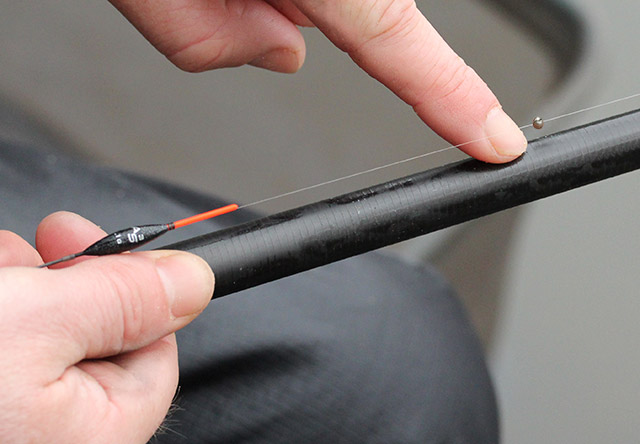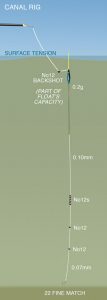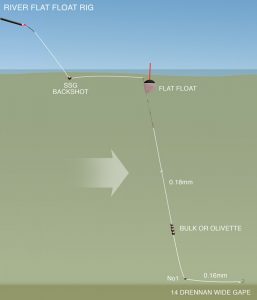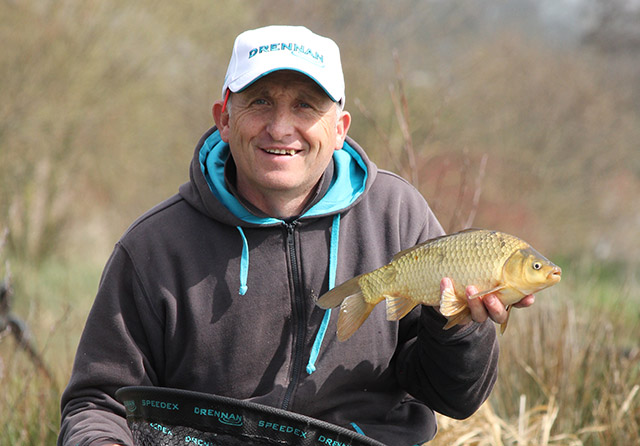England international Stu Conroy passes on some expert advice on the advantages of backshotting a pole rig.

Ask any top angler, after location, what is the next most important thing in fishing and they will probably say either feeding or presentation. With much of our fishing done with poles it’s not always easy to present a still, natural looking bait, especially in windy conditions. This is where a backshot can make a big difference.
A backshot is usually done with a split shot placed between the pole tip and the float, usually below halfway to keep tangles to a minimum. The shot can vary in size depending on the conditions and what your trying to achieve. Here are the four main situations where I would use backshots:
1. Combat Wind

Backshots are most commonly used for this purpose. When using for combating wind the rig should be shotted normally. Do not incorporate the back shot into the shotting capacity of the float. Backshotting this way means you have to keep it held up to the water level to prevent the float from sinking, so concentration has to be paramount.
The size of the shot depends on the conditions. The windier it is, the larger the backshot I use, although a No4 shot is a good starting point (some people might prefer an equivalent bulk of No8s). The use of a backshot here allows the pole to be blown from side to side without the rig being affected. I would normally use around 3ft (1m) of line between pole tip and float, with the backshot about 1ft (30cm) from the float. This presentation method is particularly deadly for bream and tench; two species that often require the hook bait to be fished overdepth and stationary.
2. Eliminate Surface Tension

When using very light, sensitive floats, it can sometimes be difficult to get the float antenna to settle in exactly the same place each time. This is often due to the float sticking on the water’s surface film, which can create a small loop of line above the float that causes it to settle inconsistently. By placing a small No12 or No13 shot around 5mm above the float the problem is often eradicated. As this shot is so close to the float it has to be incorporated into its overall shotting capacity. This is the only type of backshot that doesn’t have to be held up.
3. Holding Back Hard On Rivers

The use of large flat floats on our rivers with a pole has increased dramatically. It’s an exciting and accurate way of fishing for a variety of species, including bream, barbel, perch and eels. The method is usually used in conjunction with a front rest or pole support. This allows the angler to position the pole tip just under the water so the float sits correctly and doesn’t ride up. A downside to this is that the pole tip can sometimes fill with water, causing it to become top heavy and even break on the strike. By using a very large backshot, such as an SSG, the pole can be kept out of the water. Simply adjust the size of the shot and alter the height of the front rest until the float sits correctly.
4. Hit More Bites

A lot of commercial fisheries in the UK contain F1s these days, which can be really fickle feeders, especially when using pellets as bait. The bites from these fish can be difficult to hit as they don’t keep hold of the bait for very long. This is even more so in winter. The bites are often just a slight ‘dink’ on the float that many anglers don’t even react to.
In this situation, a backshot has become invaluable to my fishing. By placing a No4 shot six inches (15cm) from the float, I can create a scenario where I’m fishing very nearly direct to the top the float. Used in conjunction with a really dotted down float tip I find myself hitting bites I ordinarily wouldn’t have struck at.
So, next time you’re in one of these situations, give backshotting a try. You may be pleasantly surprised by the difference a backshot can make!

